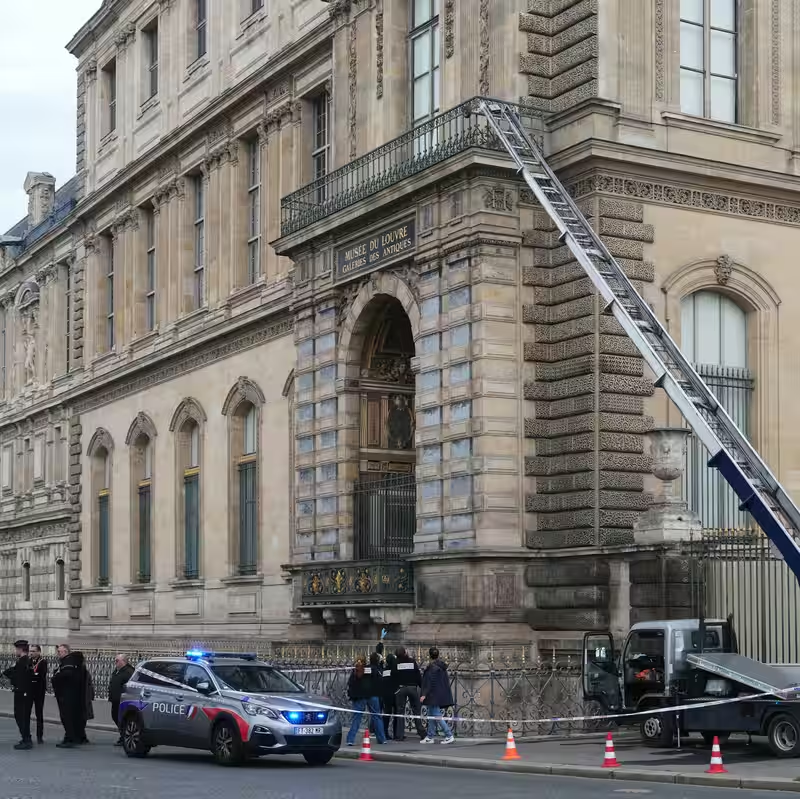Table of Contents
- The Brazen Daytime Heist
- Critical Security Gaps Exposed
- Why These Jewels Were Chosen
- Suspicious Timing and Global Distractions
- Where the Investigation Stands Now
- Broader Implications for Museum Security
- Sources
The Brazen Daytime Heist
On a sunlit Tuesday morning in Paris, two individuals walked into the Louvre Museum’s Galerie d’Apollon—the very room that houses some of the world’s most priceless jewels—and walked out minutes later with a small but devastating haul.
According to French authorities and a joint investigation by The New York Times, the thieves struck just after 11 a.m., exploiting a brief window when guards were transitioning shifts. They smashed a reinforced display case containing 19th-century royal gems and fled on foot through a service corridor rarely monitored by cameras.
“It was surgical,” said a senior investigator who spoke on condition of anonymity. “They knew exactly what they wanted—and how to get it.”
Critical Security Gaps Exposed
Despite the Louvre’s reputation as one of the most secure museums globally, the heist revealed shocking vulnerabilities:
- No motion sensors on the targeted display case
- Blind spots in surveillance coverage near service exits
- Delayed alarm response due to outdated internal protocols
Worse, the museum had recently reduced on-site security personnel as part of a cost-cutting initiative—leaving only two guards patrolling the entire jewelry wing during peak hours.
Why These Jewels Were Chosen
The stolen items included the “Sapphire of Empress Eugénie” and a diamond-encrusted brooch once owned by Napoleon III—pieces valued at over €70 million but small enough to conceal in a coat pocket.
Experts believe the thieves were likely hired by a private collector or international syndicate specializing in high-value art theft. Unlike paintings, such jewels are easier to transport, harder to trace, and can be recut or melted down to erase their provenance.
Suspicious Timing and Global Distractions
The heist occurred amid heightened global tensions—including the fragile Gaza ceasefire brokered by Trump officials and rare earth supply chain disputes with China. Some analysts speculate the thieves deliberately timed the theft to coincide with international news cycles that would overshadow the crime.
“When the world is watching Gaza or Taiwan, a jewel heist in Paris doesn’t trend,” said Dr. Amélie Laurent, a cultural security expert at Sciences Po.
Where the Investigation Stands Now
French police have released grainy CCTV footage showing two suspects—one male, one female—wearing tourist attire and carrying backpacks. Interpol has issued a global alert, and Europol is assisting with digital forensics.
Notably, no ransom demands have surfaced, fueling fears the jewels may already be en route to underground markets in Dubai, Geneva, or Macau.
Broader Implications for Museum Security
The Louvre heist has triggered emergency reviews at major museums worldwide. The Met in New York and the Hermitage in St. Petersburg have already announced upgrades to case alarms and AI-powered surveillance.
“This isn’t just about Paris,” said UNESCO’s cultural heritage director. “It’s a wake-up call for every institution holding irreplaceable treasures.”




